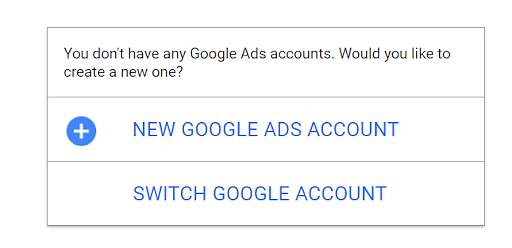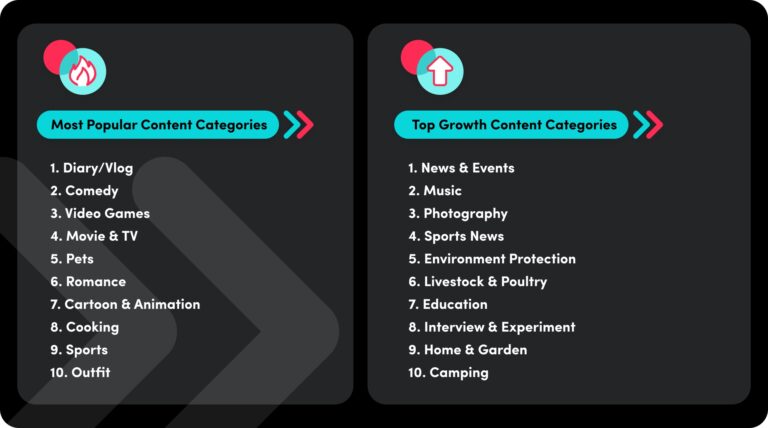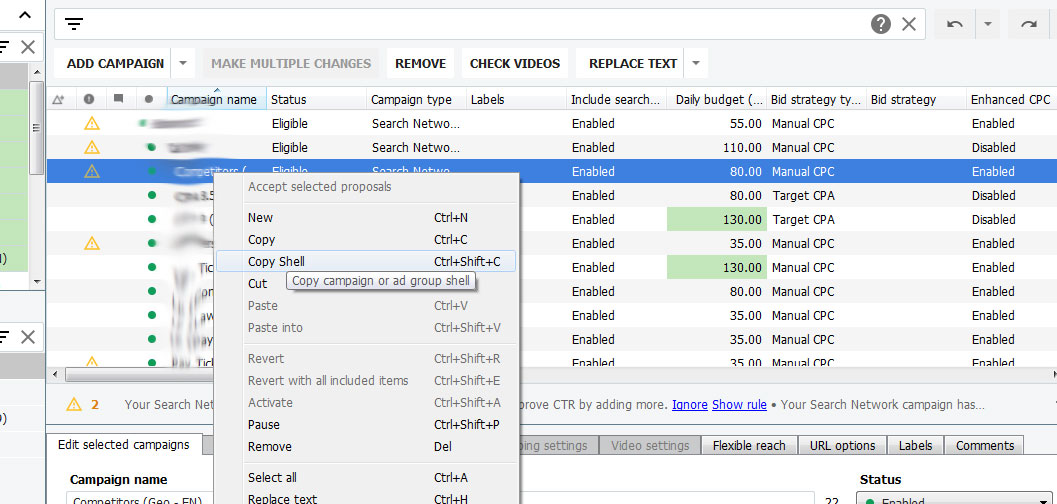
Google's Adwords Keyword Planner tool offers two views. First, you will see the cost per keywords. Next, you will see the average cost of a click. And last, you can see the data ranges for the different keywords. These terms can then be added to your keyword list.
Google Adwords Keyword Planner
Google Adwords Keyword Planner makes it easy for marketers to identify high-value keywords that are commercially relevant. Keywords with high search volume and low competition will be ideal for PPC campaign. It provides information on search volumes as well as bid prices to help you determine the most effective keywords to target. It gives you an estimate of what your ads will cost before you make any commitments.
This tool can be accessed via the Adwords dashboard. It's primary purpose is helping you optimize search ads. But you can also make keyword-rich blogs, landing page pages, product pages, etc. Google is always adding new features and modifying existing ones.
Cost per click
Google Keyword Planner provides a range of features to assist you in choosing keywords to bid for, and how likely they will perform. It provides a forecast of what your ad will cost per day. You can also set the maximum and lowest bid amounts for your campaigns. It can help you predict how many people are likely to view your ads per keyword.

The Adwords keyword planning tool can help you determine the cost per Click for each keyword and phrase. Long tail keywords are phrases that contain four or more words and are less expensive than those with broad terms.
Average CPC
Adwords' keyword planner tool can help increase your chances of landing relevant keywords. It allows to filter your search according to difficulty and competition. You should choose low or medium difficulty keywords, as they will have a lower suggested bidding. The landing page tool can help you find a landing page.
This tool also displays the average monthly search volume for keywords you have selected. These are just averages. Google's estimates will be based on conversions and clicks. The past twelve months of data will be required to calculate your average CPC.
Data ranges
Google's Adwords keyword plan tool allows you to see data ranges as well as the volume of searches. The tool will display information from 100K-1M on monthly searches of the keyword "party dress" for example. Although the numbers appear to be rounded, they show significant differences between the upper (and lower) ends.
Google's keyword-research tool is always being upgraded to offer more features. Recent updates include search volume and date ranges. This means that you'll have access to more information on the right keywords.

Search volume
Search volume plays a vital role in search engine optimization. It indicates how many times a keyword was searched within a specified time frame. This data is crucial for optimizing content and identifying the best keywords to target. Long-tail keywords are more searched than their shorter cousins. They are nevertheless easier to rank.
The Adword keyword planning tool allows you to get an estimate of how many people are searching for that term. This tool can be useful when bidding for similar terms and estimating the performance of competitive keywords. It supports various workflows to build ad groups or campaigns. It provides a seamless user experience.
FAQ
What is the best way to learn about television advertising?
Television advertising has the potential to reach large audiences at once. It was also very costly. However, if you use it well, it can be incredibly powerful.
Although there are many kinds of TV ads to choose from, all share the same characteristics. Planning any TV ad should start with ensuring it fits in its category. It is not a good idea to try and run a lifestyle TV commercial while running a product or service commercial. Your message should be consistent throughout the entire campaign.
Second, prime-time hours are the best times to air your ads. This is because TV viewers often relax while in front of the screen. You want them to be comfortable enough to listen to your words.
You don't have to be rich to achieve great results. Actually, it could be the contrary. A University of California study found that commercials broadcast during popular shows had a lower chance of selling products than those broadcast during less-popular shows. You should ensure that you spend your money wisely if you plan to advertise on television.
What should you know about printing advertising?
Print advertising can be a powerful medium for communicating with customers. Print advertising is used by many companies to promote their products and services. Its main purpose is to grab the attention of consumers.
Print ads are usually short (one page) and contain text, pictures, logos, and other graphics. These ads may include sound, animation and video as well as hyperlinks.
The following categories are the most common types of print advertisements:
1. Brochures - These are large format printed pieces designed to attract people into stores. Brochures can often be adorned with brightly colored images and eye-catching designs.
2. Catalogues - These are smaller versions of brochures. They are typically sent to customers who have requested information on specific items.
3. Flyers - These are small pieces of paper distributed at events such as concerts and fairs. These flyers are usually free, but they must be purchased if given to retail outlets.
4. Posters – These are larger versions for flyers. They are displayed on walls, fences, and buildings. These are often created with computer software programs to grab the attention of passersby.
5. Direct mail - This refers to letters or postcards mailed directly to potential customers. Companies send these out periodically to remind existing customers about their business.
6. Newspaper Ads – These are ads that appear in newspapers or magazines. They can be quite lengthy and often include text as well as images.
Radio advertising: What are your options?
It is important that you understand the differences between media. All media forms can be considered complementary, rather than competing.
Radio is best used as an extension of television advertising. Radio complements television advertising by reinforcing key messages or providing additional information.
Radio listeners may find TV commercials too long. Radio ads are typically shorter and less costly.
How do I choose my target audience?
Start with yourself and those close to you. If you don't know where to begin, ask yourself, "who am I trying to reach?"
Ask yourself these questions: Who do you consider the most influential in your industry? What are their biggest challenges? Which people are the most intelligent in my industry? You can find them online.
Start at the beginning of your business. Why did you begin? What problem were you able to solve and how did this happen?
These answers will allow you to determine who your ideal customers are. Learn more about them and why they choose to do business with you.
To get clues about who they cater to, you can also check out your competitors' social media pages and websites.
Once you identify your target customers, then you must decide which channels to use to reach these people. An example: If you provide services to realty agents, you may create an informational website for home buyers.
If you provide software to small businesses, you could develop a blog targeting those companies' owners.
If you sell clothing, you could create a Facebook page for teens. If you own a restaurant, you can set up a twitter account to provide information for parents searching for child-friendly options.
It is important to remember that there are many methods of getting your message across.
How much does it cost for social media advertising?
If you decide to go this route, you should know that social media advertising is not free. You will be charged monthly based on how much time you spend on each platform.
Facebook - $0.10 Per 1,000 Impressions
Twitter - $0.20/1000 impressions (if applicable)
Linkedin - $0.30 for 1,000 impressions if your send out invitations
Instagram - $0.50 per 1,000 impressions.
Snapchat - $0.60 for 1,000 impressions ($0.40 Per User)
YouTube - $0.25 Per 1,000 Views
Tumblr Text Posts - $0.15 Per 1,000 Impressions
Pinterest - $0.05 per 1,000 impressions per month
Google + $0.15-$0.20 Per 1 Million Impressions
Tumblr $0.15- $0.20 for 100,000 impressions
Vimeo - $0.20- $0.25 per 10,000 impressions
Soundcloud – $0.20-$0.25 for 1 million plays
StumbleUpon - $0.20 -$0.25 per 1 billion pageviews
Digg - $0.20 to $0.25 per 1000 diggs
Reddit $0.20-$0.25/1000 comments
Wordpress $0.20-$0.25 per 500 Comments
Flickr - $0.20 -- $0.25 per 5,000 photo uploads
What is affiliate marketing?
Affiliate marketing is an internet business model in which you refer customers to other products and services. When someone purchases from you, the product owner will pay you.
Affiliate marketing is built on referrals. People don't need to do anything to purchase from you. Refer them to the website.
It's possible to make money with no selling. It's easy to sell just as much as it is to purchase.
Even affiliate accounts can be set up in just minutes.
Referring more people will result in more commission.
There are two types:
-
Affiliates who have their website owned by them
-
Affiliates who work for companies that offer products and services.
Advertising is what?
Advertising is an art. Advertising is more than selling products. It's about making emotional connections between people, brands, and each other.
Advertising is about storytelling and using images to communicate ideas.
It is important to communicate clearly and persuasively. Your target market should be able to relate to the story you tell.
Advertising is therefore different from other forms such as presentations, writing, and public speaking.
Because when you create a successful ad campaign, you are creating a brand identity for yourself.
This is how memorable you can be. You will be remembered by others.
Statistics
- Nonetheless, advertising spending as a share of GDP was slightly lower – about 2.4 percent. (en.wikipedia.org)
- Advertising spending as a share of GDP was about 2.9 percent. (en.wikipedia.org)
- It collects money from the advertisers, keeps 32% for its role in facilitating the process, and the remaining 68% goes to the publisher (you). (quicksprout.com)
- It's 100% reliant on your website traffic. (quicksprout.com)
External Links
How To
How to advertise Facebook
Facebook is one the most used social media platforms in the world. It has been estimated that around 1 billion people use Facebook every month. This makes Facebook one of the largest companies in the world. Facebook's unique features, such as video calls, chat and games, are the main reason for its popularity. Facebook accounts allow users to share photos, comments, send messages, play video games, and watch videos. Facebook allows businesses to advertise. These advertisements can include text ads, banner ads, sponsored stories, promoted posts, and many others.
Facebook advertising can be done in two ways. Advertising on Facebook can be paid for. Another way is to use free methods. We will discuss how to do these two things below.
How to advertise on Facebook through paid options
Paid advertising on Facebook is done by paying Facebook directly for each impression. You can pay monthly or annually. Facebook offers paid advertising in many forms. These include:
Text ads – These ads are very similar to regular text ads. However, they appear above or below the feed instead of being shown next to newsfeed items.
Banner ads, which are large rectangle images that cover a whole page, are often large. They often advertise an offer or a product.
Promoted Posts - Similar to regular posts, they appear at the top of the newsfeed. Businesses use promoted posts often to promote products.
Sponsored Stories are stories that have relevant content and appear at the top users' feeds. These stories can be paid for by brands or businesses that want to reach potential clients.
How to use free advertising
Facebook offers free advertising. These include Text ads as well as Banner ads, Promoted Posts and Sponsored Stories.
You cannot, however, create a custom audience with free advertising. Targeting people on the basis of their age, gender, geography, language, interests or relationship status is limited.
How to get started with advertising on Facebook
Signing up for an account is the first step to advertising on Facebook. This will allow you to access all tools. To set up your account, follow the steps below:
-
Click "Create New Ad Set"
-
Add a name to your ad-set.
-
Select the type you'd like to advertise (text, image, or video).
-
Choose which locations you would like to target.
-
Set the budget amount.
-
If you use Facebook Audience Network, select it from the drop-down menu.
-
Click "Next Step."
-
Click "Review & Proceed".
-
Before you click "Continue", review your selections.
-
Provide any additional details.
-
Click "Save changes."
-
Before you start your campaign, wait until your ad campaigns have expired.
-
After the campaign has ended click "View Ad Statistics".
-
See the results of your campaigns.
-
You can continue repeating steps 13-16 until the settings that work best for you business are found.
-
Get started advertising!